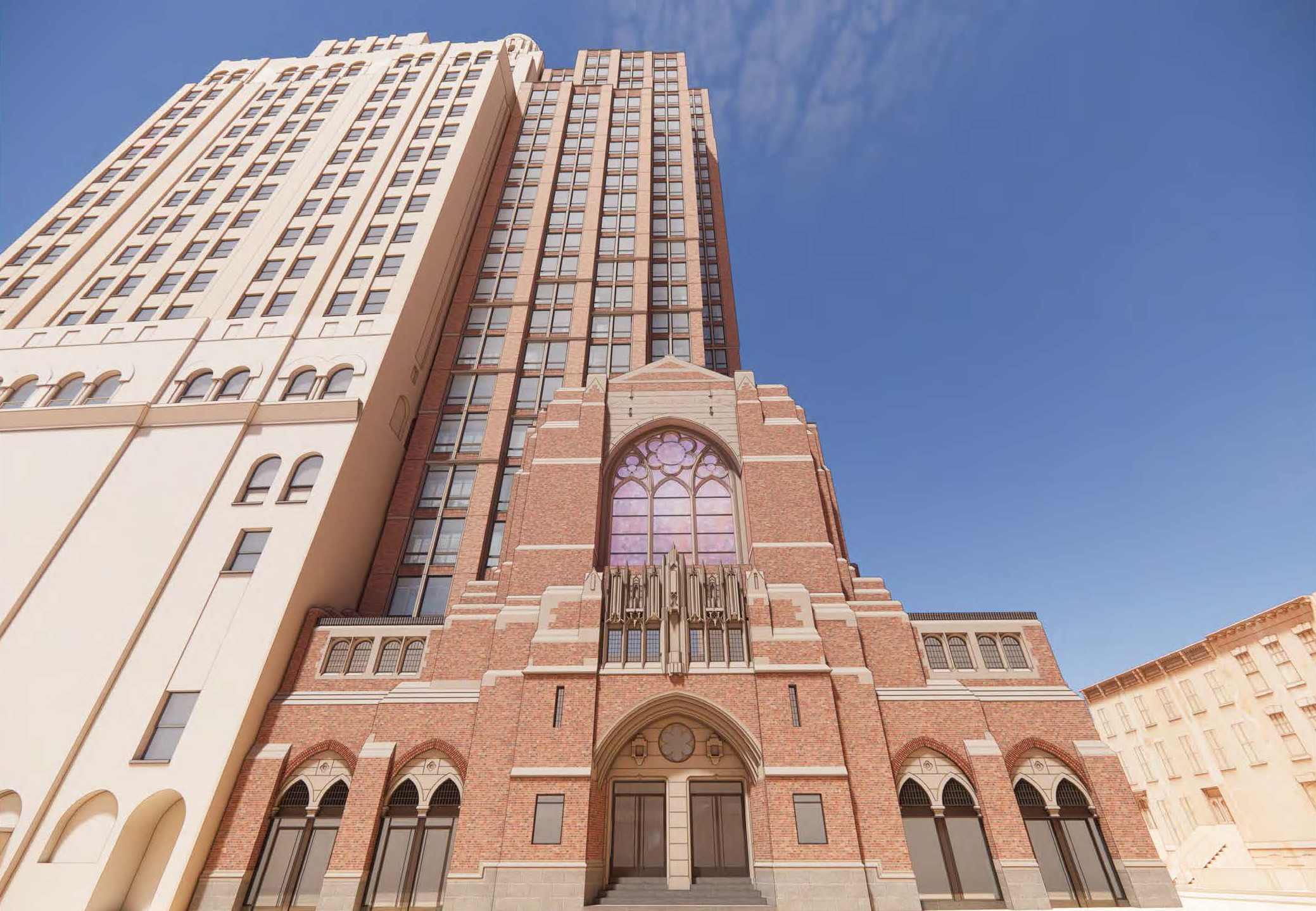Anti-AY Lawsuits: And Then There Was One
The legal challenges against Atlantic Yards are dwindling. On Friday afternoon a state judge dismissed a lawsuit filed by Develop Don’t Destroy Brooklyn and 25 other community groups challenging the project’s environmental impact review statement. In her 71-page decision, Justice Joan A. Madden shot down most of the lawsuit’s claims, which argued that the state’s…


The legal challenges against Atlantic Yards are dwindling. On Friday afternoon a state judge dismissed a lawsuit filed by Develop Don’t Destroy Brooklyn and 25 other community groups challenging the project’s environmental impact review statement. In her 71-page decision, Justice Joan A. Madden shot down most of the lawsuit’s claims, which argued that the state’s review of the project didn’t fully account for its possible effects on traffic, security and open space. Forest City Ratner, Marty Markowitz and the ESDC hailed the decision. “We are very pleased with Judge Madden’s decision, as it further clears the way for Atlantic Yards and the thousands of jobs, affordable housing units and world-class arena—the Barclays Center—that will accompany the project,” said Forest City chief executive Bruce Ratner. The dismissal means the only major lawsuit still pending against Atlantic Yards is the one challenging the use of eminent domain for the project. DDDB says it plans to appeal Madden’s decision, and that the anti-AY fight still has plenty of life left in it. “We are disappointed by the court’s ruling. But let’s be clear: Atlantic Yards cannot move forward while the thirteen plaintiffs—homeowners, business owners and tenants—are in federal court in a separate case challenging New York State’s unconstitutional use of eminent domain. We expect to prevail in that lawsuit, as well as on the appeal of today’s decision,” said DDDB spokesman Daniel Goldstein.
NY State Supreme Court Rules for ESDC in Atlantic Yards Lawsuit [DDDB]
Atlantic Yards Environmental Impact Review Suit Dismissed [Gowanus Lounge]
Judge Dismisses Challenge to AY Environmental Review [Atlantic Yards Report]
Big Loss for Atlantic Yards Foes as Environmental Lawsuit Dismissed [NY Observer]
Judge Dismisses Lawsuit Seeking to Block Atlantic Yards [NY Times]
Atlantic Yards model from AtlanticYards.com





BrooklynCouch —
I suggest you read some of the highlights from the environmental impact statement that was done by the Empire State Dev. Corporation. You ask why opponents talk of a huge traffic nightmare? Perhaps it’s because even the ESDC acknowledges that there will be an additional 20,000 automobile trips to the intersection of Atlantic/4th/Flatbush thanks to this arena-highrise complex. The ESDC acknowledges that this will lead to “queuing” at traffic lights for many blocks in all directions from the AY site. That’s when cars have to wait for more than one light cycle to go a single block. And as we all know, that’s a recipe for gridlock and incessant honking. What’s amazing about the ESDC is that they claim that this is not a serious impact.
You think event traffic won’t interfere with rush hour? Game time is sometimes 7:30. Visitors coming by car to the Prudential Center in Newark are advised to arrive in Newark 90 minutes early to allow for traffic and time to park! Oh, and by the way, the ESDC chose to analyze traffic issues only for the 7-8pm window, disregarding the fact that event traffic will certainly begin earlier than 7pm for a 7:30 game!
If the design for this arena were truly forward-thinking in terms of traffic issues, there wouldn’t be 4,000 parking spots included. There would be a plan to ban the creation of parking garages in the vicinity. There wouldn’t be a plan to create an “interim” parking lot on many blocks of Prospect Heights for another thousand vehicles.
There are so many other problems with AY (chief among them a great deal of obscurity as to whether the public is going to get a good deal on its MASSIVE subsidies to the developer), and what’s tragic is that most of them could have been ameliorated through open and decent planning.
But this project has been developer driven from the beginning. And our corrupt political system is more than ready to fork over 22 acres to a single developer, a developer like Ratner who has a miserable record in terms of his projects in Brooklyn.
Ratner is responsible for Metrotech, which created endless deadzones in terms of street life in Downtown Brooklyn. Ratner is responsible for the hideous Atlantic Center and Terminal malls.
It’s like electing George W. Bush for a third term.
I love lemonade. At Ikea it’s only like 50 cents!
One needs to be skeptical of oppostion to AY when most of the opposition comes from the left-of-center political types.
Still not sure why “huge traffic nightmare” is envisioned since most of the residents will be, primarily, users of the subway and LIRR; and much, if not most of the event traffic will not be during rush hours. Obviously it may suck if your brownstone is around the corner, but that’s not a reason to doom the project.
On the other hand, Ratner is not someone I would like to have a beer with…
RE: IKEA jobs: Over 70% of the residents of Red Hook live in the projects — about 8,000 people in total. Since public housing has a requirement of low income, it does stand to reason that the overwhelming majority of residents do not have the education or managerial experience to fill those sorts of managerial positions at Ikea. 300 entry level jobs — with room to learn new skills and gain work experience — is great for Red Hook residents. 3.75% of the population of the Red Hook Houses could work at the new Ikea. When you subtract old folks and kids from the equation, that number is a lot higher. Plus, the new employees can walk to work, which is always great for anyone but I’m sure especially appreciated by people in Red Hook, which is under-served by public transportation.
And, no, I don’t work for Ikea. I’m just constantly amazed at how some people on this site always want to turn lemonade into lemons.
I think you have to combine the comments. There is nothing wrong with entry level -jobs -i.e. mopping floors. What is wrong is paying 2 Billion dollars of our money to create 300 of these jobs. The city could hire 300 people and keep the rest of the money. And remember everyone, this is YOUR money before handing accolades to Mr. Ratner
It’s about time the lawsuits against this project start to end. Greedy brownstone owners are just making this project even more exspensive. I’m looking forward to when this finally starts.
10:34 – No I don’t
I’m a white collar worker and i am starting to think I may want to mop floors soon. It pays better than doing this.
10:08,
You’re still missing my point about the “mopping floors” comments. If someone has no job and then gets a minimum wage job, that alone is an improvement. A person may stay in that job for a few years and use it as a stepping stone to something better. Minimum wage jobs might be taken as part-time work by a college student (as I did when I was in school). Or a recently-arrived immigrant may take a minimum-wage job as a first step or as a secondary job to pick up extra money. In another example, someone recently released from prison and looking to start over and meet the rigorous demands of parole might take this type of job, eventually moving on to something higher-paying.
The prevailing sentiment on this board appears to be that if the proffered job is (1) unskilled or semi-skilled labor and (2) offering the minimum wage, then it must be worthless. The reality is more complex (even though I agree that the minimum wage should be higher than it currently is).
As 10:24 notes, not everyone has the education, training, experience, and skills to get a “white collar” or “skilled trades” position. Meanwhile, a minimum-wage job can provide some income and teach soft-skills, such as attendance, punctuality, teamwork, and interpersonal relations. Hopefully, with time the person will get promoted, move on to higher-paying job, or go to school to advance his/her career. But if they never take that first step (which is often an unskilled, minimum-wage job like the ones associated with Atlantic Yards), then how can they succeed in the long term?